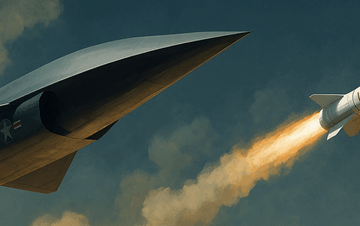After India became a member of the Missile Technology Control Regime (MTCR) in 2016, it increased its missile exports and extended its market for defense exports because of its greater access to advance missile technology. MTCR membership enhances India’s credibility as an arms exporter, providing access to a wider range of potential buyers. This offers India potential missile and defense collaborations with states like the United Arab Emirates, the Philippines, Vietnam, Thailand, and Indonesia.
India and the Philippines are set to sign a $200 million missile deal in 2025, that will include Akash missiles, which is a short-range surface-to-air ballistic missile and has a range of 25 kilometers (km). This is the second defense venture between Manila and New Delhi, the first being the acquisition of missile systems in 2022 worth $375 million from India. This new development shows India’s rise in the international defense market.
To enhance its defense capabilities, India robustly tests missile systems. In March 2024, India successfully tested the nuclear-capable intercontinental ballistic missile (ICBM) Agni-5 missile, which has a range of 5,000 km. This missile is capable of carrying multiple independently targetable reentry vehicles (MIRV) and has elevated India’s status as it enters the group of states that can fire multiple warheads from a single ICBM. In November 2024, India tested a long-range hypersonic missile successfully that can mark targets 1,500 km away. This missile is indigenously developed and puts India in the league of just a few countries that have developed this advanced technology.
In its Defence Day parade in January 2025, India publicized the mass production of quasi-ballistic Pralay missiles, which have a range of 150 to 500 km, can carry a payload of 500 to 1,000 kilograms (kg), and can maneuver while keeping a low trajectory. This is a short-range surface-to-surface tactical missile and is expected to be deployed near the Chinese and Pakistani borders. Moreover, there are media reports that Armenia is interested in buying these missiles from India.
According to media reports, India issued a notice to airmen (NATOM) in early 2025 for potential missile tests in the Bay of Bengal. It is anticipated that this NATOM was conducting tests of the Agni-5MII. If tested successfully the Agni-5MII will modernize the Indian military, advance the Indian missile program, give India an edge over regional competitors, and will enhance India’s status in shaping the global security dynamics.
Along with the modernization of its missile program, the MTCR’s membership grants India greater boosted defense ties with various states, as previously mentioned. The MTCR focuses on missiles alone, but Indian defense exports are beyond just missiles. They include a broader range of equipment and services. Indian defense exports are estimated to increase to over $4 billion by 2025.
Moreover, India is actively pursuing partnerships with France, Israel, Russia, and the US. All of these partnerships focus on joint development and production of defense equipment, joint productions, transfer of technology, and military exercises.
Growing Indian missile capabilities pose a challenge to regional competition, putting Pakistan in a position where it needs to maintain the balance of power in the region via upgrading its defense capabilities. Indo-Philippine defense ties can be translated as a shift in the alliance in the Pak-Philippines equation. This was a traditionally warm relationship. It can force Pakistan to look out for developing closer ties with other states to counter this emerging alliance.
The technological advancement India achieved via the Akash missile can push Pakistan to invest in developing the same capabilities to counter any future Indian threat. The selling of Akash missile technology to the Philippines can be viewed in the light of India’s attempt to expand its strategic footprint at the regional and global level.
Pakistan then needs to reassess its own strategic alliances and defense posture. Growing Indian missile and defense ambitions will have repercussions on peace and stability both at the regional and global level. India’s growing missile ranges, in the case of ICBMs, will be perceived by China as an emerging threat, which can escalate tensions between these two states. The mutual perception of threat by China and Pakistan has the possibility of driving these two nations closer together. This is certainly not something the United States desires.
Dr. Anum Riaz is the Associate Director of Research for the Center for International Strategic Studies (CISS), Islamabad.





Some real compelling points about India’s missile advancements and their ripple effects. The hypersonic tests definitely showcase India’s technological leap, but I’m skeptical about labeling it an outright threat to global peace until we have confirmation about their accuracy and precision. Possibly it’s more of a deterrence tool in a tough neighborhood? Pakistan and China aren’t exactly standing still either—both have their own programs pushing the regional arms race. The real question is whether India’s MTCR-backed export strategy, like the Akash deal with the Philippines, will stabilize or destabilize Southeast Asia. I’d love to hear more about how India balances its defense ambitions with avoiding escalation—especially with China watching closely. Great piece. It’s got me thinking.